
by Somya Devi | Nov 3, 2021 | Astrology, Conjunctions, Eclipses, Holy Days
Diwali New Moon 2021
Thursday, November 4th brings a New moon at 5:15 pm ET and marks the celebration of Diwali, the Hindu festival of lights. As the world outside darkens, we clean our houses and light candles and lamps to celebrate the light, calling in the auspicious blessings of goddess Lakshmi and Lord Rama, gathering with family and friends to share warmth as the season becomes cold.
New Moon in Libra and Swati
This Diwali is marked by the New Moon in sidereal Libra, as Sun and Moon join with both Mars and Mercury there. Libra is a sign about balance, where we seek to bring balance and harmony into our relationships and the outer world. The sky is very imbalanced at this time, however, with eight out of nine grahas clustered on one side of the sky, towards the galactic center.
The four planets join in the Vedic nakshatra of Swati, symbolized by a young sprout blowing in the wind. With Sun debilitated here, it can be easy to lose our center and fall out of balance, especially as the cold vata winds are increasing in the outer atmosphere. This time of year self-care is of utmost importance!
Saturn and Jupiter
Saturn and Jupiter are together again in sidereal Capricorn, with Saturn aspecting the New Moon and putting on the pressure to constrict pleasures and focus on responsibilities. The two together can bring power to some situations, but despite the neecha bhangha yoga being created, Jupiter will be much more comfortable and able to offer more expansive blessings when he transits once again into Aquarius on November 20th.
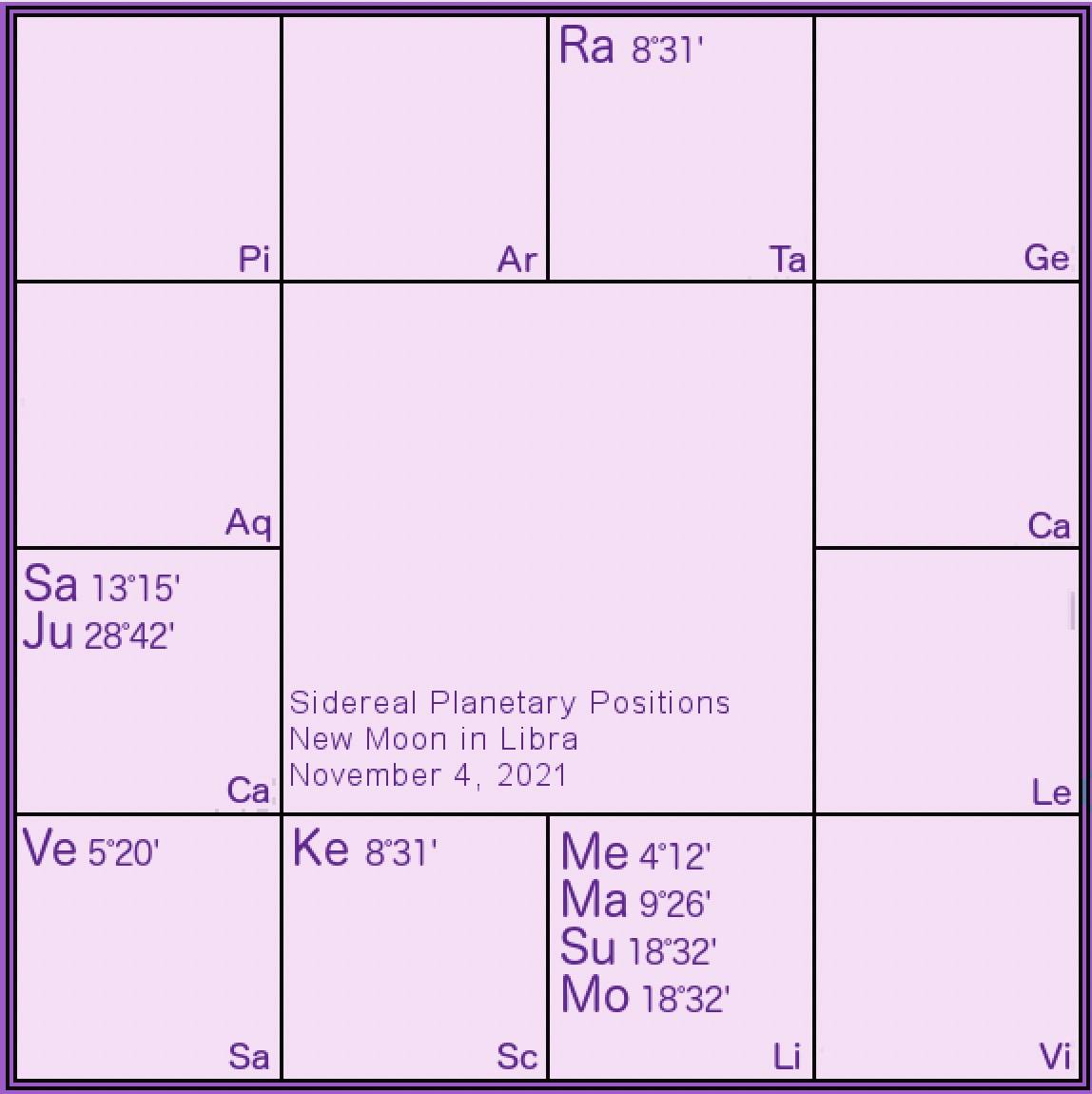
Eclipses
This New Moon actually brings us straight into an eclipse period, with a lunar eclipse occurring on the coming full Moon of November 18th-19th, and a total solar eclipse on the next New Moon of December 4th. Eclipse periods stir up energy from the shadows, making red flags wave bright and bringing the opportunity to navigate discomfort with grace or clumsiness. Depending on your natal chart this could be stimulating change in one particular area of life.
Diwali
On the new Moon of the Hindu month of Ashwin (this month), we celebrate Diwali, the festival of lights. The festival began this year on November 2nd (North America), on the 13th waning Moon phase of the previous cycle. This day is known as Dhanteras, or Dhanvantari Tryodashi, the celebration of the birth of Lord Dhanvantari, the father of Ayurvedic medicine. If you practice any healing tradition, especially Ayurveda, it is a good day to give thanks and call in auspicious blessings to your healing path or practice. Diwali is strongly associated with the Goddess Lakshmi, and is a powerful time to connect with her, calling in her blessings for both material and spiritual prosperity.
We celebrate Diwali while the days are getting noticeably shorter and darker, and it is a time to invite more light into our lives, our hearts, and our world. This festival celebrates the victory of light over darkness, which is something to rejoice in and have faith in, even if we can’t outwardly observe it sometimes. Creating positive vibrations internally is the best way to begin growing and spreading them externally.
Diwali also commemorates Lord Ram’s and Sita’s return from exile after fourteen years (a story from the Ramayana). Lord Ram embodies the highest qualities of dharma, devotion, compassion, courage, and leadership. Diwali is also the start of a new lunar cycle, so it’s a great time to go within and summon these qualities to awaken and live through you.
Diwali (also seen as Divali, Deepawali or Deepavali) comes from the Sanskrit words deepa (light) and avali (row). It is traditional to light candles throughout Diwali (opt for electronic tea lights if you’re in a fire danger zone!), inviting the highest light into our homes and lives. The candles are lit to remind us of the inner divine light in us all. Though one flame can be used to light many others, it is not diminished by sharing its power of illumination. We can pray for the peace and happiness of all beings, and each one’s awareness of their inner light.
Personal Chart Readings with Coaching Are Available Here
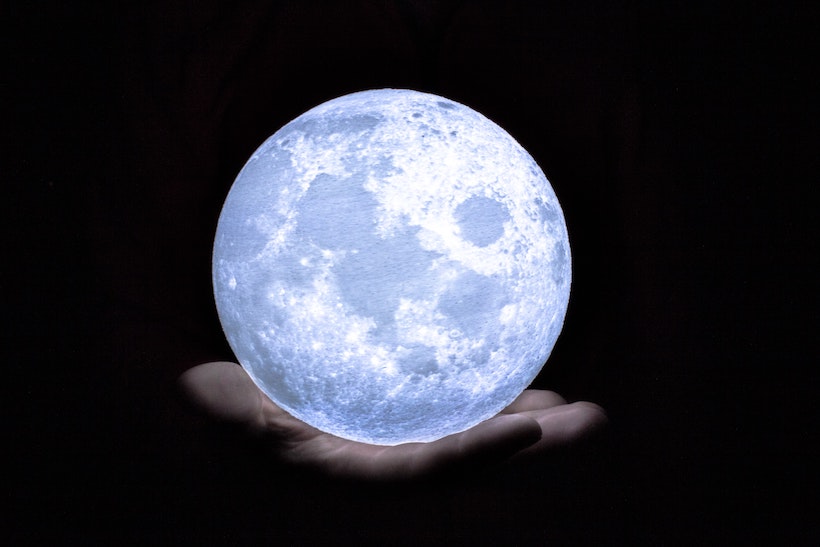
by Somya Devi | Jul 23, 2021 | Uncategorized
Guru Purnima Full Moon July 2021
The full Moon waxes to full brightness tonight, July 23rd at 10:37 pm. Fully opposite the Sun in sidereal Cancer, the full Moon in sidereal Capricorn joins a retrograde Saturn in his home sign. This particular full Moon is the auspicious one known as Guru Purnima in India, and is a day for honoring our teachers and gurus, who bring forth the light and knowledge that guides us.
Full Moon in Capricorn
Capricorn is a cardinal earth sign ruled by Saturn. It inspires us very much to create structure. With a strong retrograde Saturn on this full Moon, while simultaneously ruling over it, we may feel a certain weightiness right now that compels us to consider serious matters. The full Moon is opposite a Cancer Sun, wherein we find our power through the heart, seeking comfort in the heart space and quite often the literal home or sanctuary. The full Moon in Capricorn reminds us of the outer world and makes us take notice of the whole. At the same time, it complements the attraction to the heart space and home by reminding us of the hard work it takes to sustain it, reinforcing our commitments to our responsibilities.
Uttara Ashada
The full Moon is in the Vedic nakshatra of Uttara Ashada, the latter “invincible one.” There is a lot of power here, one that is often used for achieving dharma both on a personal level and for humanity at large. Service and spirituality are inspired by this star. It is ruled by the ten Vishvadevas, the lords of dharma, and is also associated with the Sun, the sattvic purifyer. This full Moon is a time to let impurities burn away as we align ourselves with purpose and principle, orienting ourselves towards spiritual as well as worldly victory. This nakshatra’s animal symbol is the male mongoose, making it the only nakshatra (of the odd 27) that does not have a female counterpart.
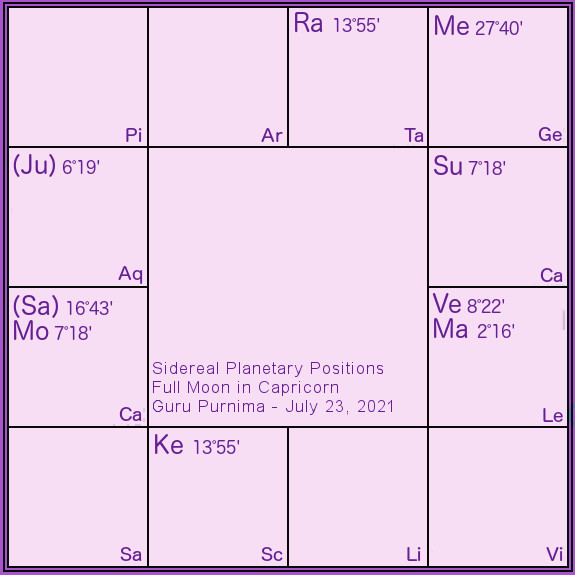
Retrograde Jupiter and Saturn
The large and powerful outer planets are on their farthest course away from the Sun right now, making them loom bright in the night sky and wield a potent yet slow and pointed force over our lives, as they appear to move backwards through the zodiac.
Saturn’s retrograde trip has been from May 23rd and stretches through October 10th, while Jupiter’s lasts from June 20th until October 17th. Jupiter will once again travel back into sidereal Capricorn, joining Capricorn there for the final month of his retrograde journey, before once again entering Aquarius on November 20th. While these two transit together Jupiter becomes neecha bhanga, a position that can both challenge and augment his expansive power in different situations, and also creates opportunity for some auspicious muhurta moments.
Personal Chart Readings with Coaching Are Available Here
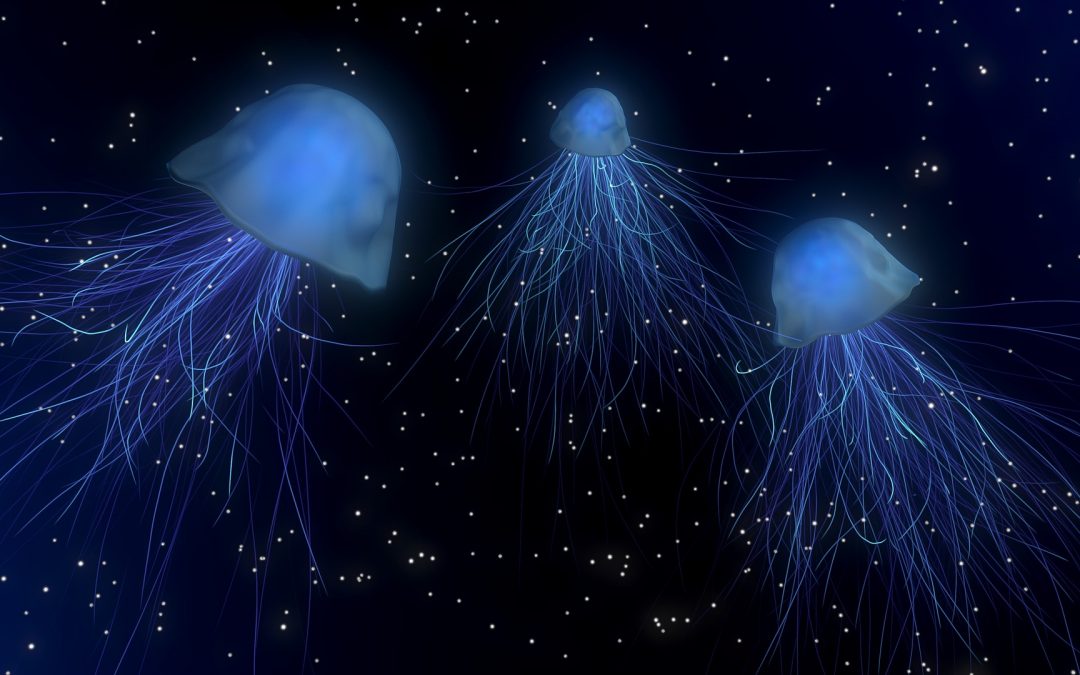
by Somya Devi | Apr 8, 2021 | Astrology, Conjunctions, Holy Days, Planets Changing Signs
New Moon April 2021
The Moon and Sun join to make a New Moon at the very end of sidereal Pisces at 10:31 pm ET on the dark night of Sunday, April 11th. This will begin a lunar cycle in which the Sun spends most of his time in Aries, his sign of exaltation. Jupiter, one of the outer, slower-moving planets, has transited into sidereal Aquarius, breaking rank with Saturn who remains in Capricorn.
Pisces-Aries Cycle
We enter another lunar cycle during which the Sun begins in one sign just two days before entering another, where he will spend most of the lunar cycle. Pisces is the last sign of the natural zodiac, the end, a place where we connect with the unseen world including the underworld itself. Aries, on the other hand, is a place of beginnings, the true springtime energy where the literal sunlight gives life to the world once again and things begin to grow outwardly. This cycle will connect these two worlds for us, bringing much of the subconscious into light as we begin to take on more activity during this season.
The Sun and Moon begin joined with a debilitated Mercury, which can make us pass up practicality in favor of hopes and dreams. Jupiter rules this femenine (inward-looking) water sign.
Revati Nakshatra
The Sun, Moon and Mercury are all in Revati nakshatra as we begin this Moon cycle. The final of the 27 Vedic nakshatras, this sign has to do with journeys, and is ruled by the deity Pushan, the protector of journeys, flocks and herds. We can imagine in particular the journey from life to death as this is the final journey that we all make. Revati means “the wealthy” and is also related to Mercury, Vishnu and Lakshmi. There is a strong association with animals and this nakshatra, and many people with planets here have a strong love of pets or animals.
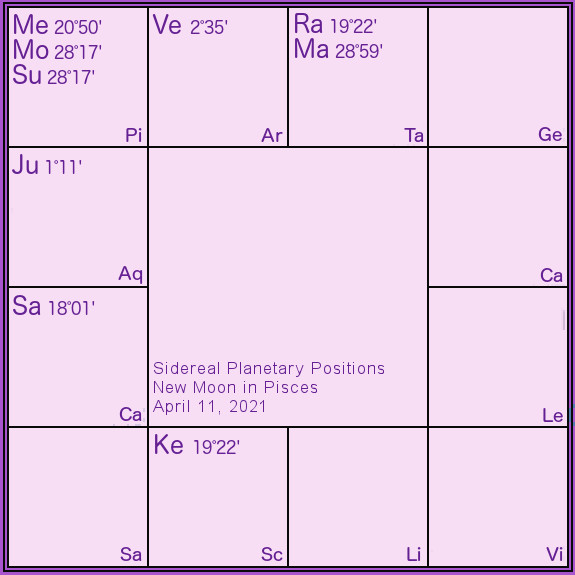
Jupiter Transit
Jupiter has moved from sidereal Capricorn into Aquarius, lightening his load as he is no longer in his sign of debilitation and joining the heavy presence of Saturn. Jupiter in Aquarius could stimulate some expansion in social programs, scientific innovations, and forward-thinking across society. This new position could stimulate some movement in your life depending on natal planetary positions and the current dasha (planetary period) and bhukti (sub-period) you are running according to your chart.
Mars Transit
Mars will leave Taurus just hours after the New Moon, finally parting ways with Rahu, lessening some of the intensity that has built up around their conjunction the past couple of months. His movement will also break the Kala Sarpa cycles, although with only one outlier the nodal alignment can still bring some intensity to current events or those born with these placements in the birth chart.
Chaitra Navaratri
This New Moon is followed by nine nights that are the springtime celebration of the goddess known as Chaitra Navaratri. These nights are celebrated in homage to the divine mother in her many forms, particularly Durga. This is not as largely celebrated as the fall-time Navaratri (Sharad or Maha Navaratri), but is also significant. This leads us up to Hanuman Jayanti which will be celebrated around the time of the next full Moon.
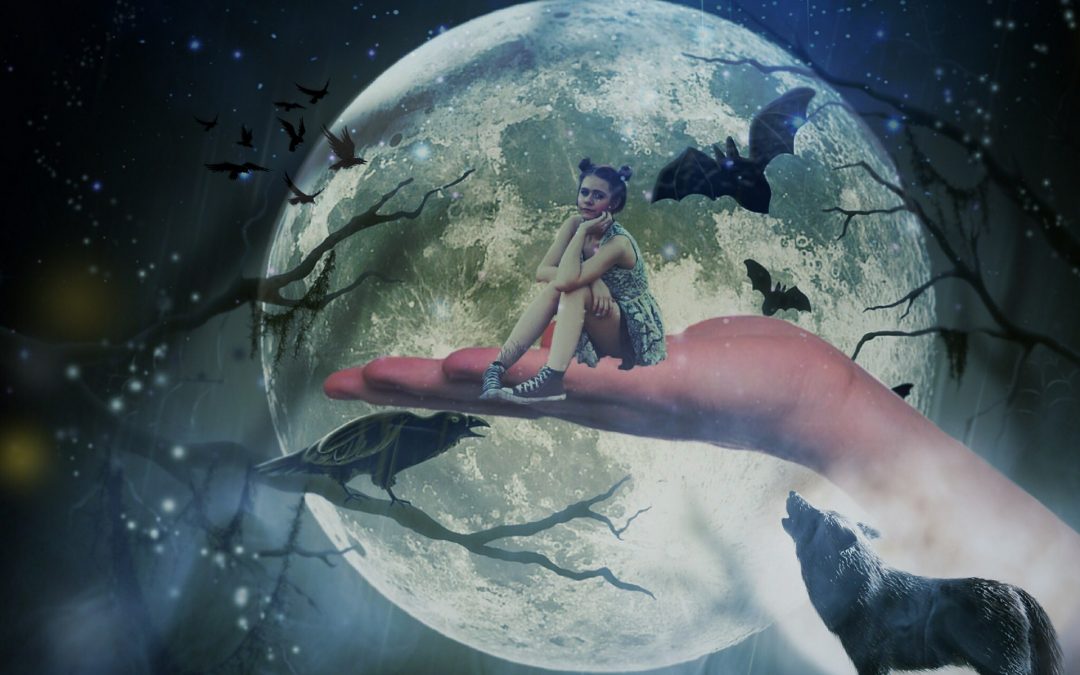
by Somya Devi | Mar 25, 2021 | Astrology, Conjunctions, Planets Changing Signs
Full Moon March 2021
The full Moon is in sidereal Virgo this Saturday night, coming in full opposition to the Sun at 2:48 pm ET on Sunday, March 28th. This full Moon is in the Vedic nakshatra of Hasta, “the hand,” signaling our opportunity to be more hands-on in crafting our own reality. The Sun joins an exalted Venus in Pisces, who is currently combust due to the close proximity of the two. Mars and Rahu are also in close conjunction, raising volatility in the world during this full Moon. Jupiter will soon transit into Aquarius, leaving his debilitated transit with Saturn.
Virgo Full Moon
The Sun is currently transiting Pisces, Jupiter’s water-sign that drives us to connect with our inner strength through deep emotional exploration, seeking a purpose greater than ourselves to which we can fully surrender. With Venus also in Pisces (exalted here), our hearts are yearning for this purpose and higher power. For some people, this alignment could stimulate a desire to escape the mundane world. There is the option to do this through intelligent means like spiritual practice and inward-looking journeys, or the potential to choose over-indulgence in escapist drugs, alcohol, or bed-pleasures. Some structured journey-work that integrates the two might be an opportunity this lunar cycle.
During the Virgo full-Moon, the Moon and our minds are illuminated with the energy of the sign that is opposite to Pisces’ deep-diving other-worldliness. In Virgo, we practice managing life’s details and being hands-on through our own efforts. Ruled by Mercury, the planet of the intellect, Virgo is an earth-sign where we figure out how to organize our lives sensibly, very much relying on the material plane to do so.
Hasta Nakshatra
Within Virgo, the Moon is full in the Vedic nakshatra of Hasta, “the hand.” Under this star we find our inner artisan, our craftiness, our skills at manipulating the world around us, both literally and figuratively. As we approach the coming Moon cycle, during which Sun will enter exaltation in Aries, and our impetus towards action and initiative will come alive brightly, we can try our hands at creating something we wish to manifest under the light of the Hasta full Moon. Hasta is ruled by the solar deity Savitri, and is also one of the Moon’s nakshatras, whose animal symbol is the powerful female buffalo.
Venus, Exalted and Combust
Venus is exalted in the sign of Pisces because Pisces gives us the opportunity to align our desires, relationships, and pleasure-seeking (Venus) with something that aligns with our values and principles (Jupiter, Pisces’ ruler) and is bigger than or beyond our normal, waking, mundane lives (Pisces). Through this month of Venus’s Pisces transit, try to take the opportunity to re-align your romantic and pleasurable pursuits with that which gives you the most meaning, be it your spiritual or philosophical values or a sense of higher power in general.
During Venus’ combustion, however, the Sun is so close to Venus that we cannot see its light at all, and some of the pleasure of life may feel like it is being “burnt up” before it reaches us. Unfortunately, Venus is spending his entire time in Pisces combust this year. Venus has been highly combust (within 3 degrees of the Sun) since March 14th. He remains highly combust during his whole exalted stint in Pisces (March 16th – April 9th), save for the last few hours when he is still quite combust within 4 degrees of the Sun. This is good time to dig deep for the more austere pleasures of life… connecting with the divine energy that is still present even when worldly pleasure may not be.

Mars and Rahu
There has been an uptick in violence the past week as Mars and Rahu came closer and closer together. Their exact conjunction will be on the early morning of March 28th, the night of the full Moon, which could bring even more acts of terror or chaos. In Rohini nakshatra, a sign of commerce, this could have an impact on the stock market and might trigger some extreme volatility there, as well.
Jupiter Transit
Jupiter will transit from sidereal Capricorn into Pisces on April 5th, finally parting ways with Saturn after spending most of the year conjunct and under his debilitating rule in Capricorn. This transit could allow for more opportunity and inspiration in your life, especially in the areas ruled by Jupiter in your personal natal chart. It signals a progressive time for philosophies across society in general, and we can expect to see more progressive and less restrictive movements gaining traction across the world.
Jupiter will enter retrogression in June, putting him back in Capricorn in September for a while before he finally re-enters Aquarius again in November.
Personal Chart Readings with Coaching Are Available Here
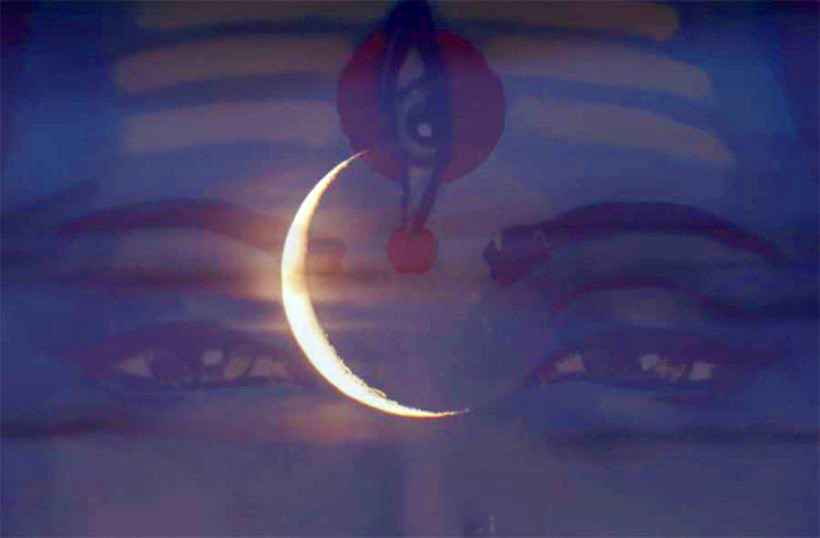
by Somya Devi | Mar 11, 2021 | Astrology, Conjunctions, Holy Days
New Moon and Maha Shivaratri, March 2021
The Sun and Moon join near the end of sidereal Aquarius on the dark night of March 12th, with an exact alignment under the New Moon at 5:21 am ET on Saturday, March 13th. Mercury and Venus also join the Moon and Sun in Aquarius, while Saturn (with Jupiter in sidereal Capricorn) once again rules over 6 grahas at the time of the New Moon. Mars and Rahu continue their conjunction in sidereal Taurus, opposite Ketu in Sagittarius, forming a Kala Sarpa Yoga in the sky. Thursday night, the fourteenth night of the waning Moon, marks the Maha Shivaratri celebration this month. Sun and Moon begin this cycle in the Vedic nakshatra Purva Bhadrapada, an auspicious sign for spiritual advancement.
Aquarius Cycle
With the new lunar cycle beginning in Aquarius, the coming month may have a quirky and forward-thinking tone, and we may see some scientific advances this month. The Mars Rover landing actually occurred just days after the Sun had entered its Aquarius cycle. Aquarius is in fact very much about service to the greater good. With Saturn strong in his own sign, we could see many significant advances in social support structures right now.
Aquarius is known as Kumbha in Sanskrit, a word for “pitcher” or “vessel.” According to the Vedic texts, the sign Kumbha can be imagined as a man holding a pot, with deep-brown skin, standing in the water. We can see this Aquarian imagery in the sadhus of India (and its biggest ritual pilgrimage day, the Kumbha Mela), who make their lives an offering of service to society through their prayers and Saturnian austerities, while renouncing the individual self. In the Aquarius cycle, we think about how we can serve the whole.
Maha Shivaratri
Thursday night, March 11th in North America, the night prior to the Dark Moon night, is the fourteenth waning phase of the lunar cycle. During this month this night is celebrated as Maha Shivaratri. This is the most auspicious night of the year for doing sadhana (spiritual practice). It is traditional on this night to stay up all night fasting, chanting, praying, and meditating. This holiday honors Lord Shiva, the great ascetic, as we recall two stories of great sacrifices that he made protect the entire creation.
One of these is the story of the gods and demons churning of the milk ocean in order to release the nectar of immortality. Before the nectar came up, however, a poison came up first. (This is similar to when we do spiritual practice and begin our path of self-inquiry, and negative tendencies often come to light first, which can be a painful experience. Similarly, during a physical fast or cleanse, toxins can be shaken loose and released first, causing a healing crisis before we continue healing into a freer, happier state of being.) When the poison came up from the milk ocean, Lord Shiva consumed it so that it would not engulf humanity, as a great and noble sacrifice. His wife, Parvati, however, held his throat so that he could not ingest it, thus saving him from being harmed by the poison.
Maha Shivaratri also commemorates the wedding of Shiva and Parvati, which also stemmed from great sacrifice made for the benefit of all humanity. It was said that after his first wife, Sati, perished, Shiva was fully devoted only to his sadhana, meditating for aeons in isolation and renouncing the world. Then the demon Tarakasura began running amock on earth, threatening all of humanity. Brahma foretold that only Shiva’s child could defeat Tarakasura, so the gods devised a plan for Sati to reincarnate as Parvati, and win over her Lord to marriage once again to produce this heir. Shiva was not easily swayed, however, and it was only after Parvati became an ascetic and underwent great penance that he agreed to marry. They eventually produced their son Kartikkeya, who went on to slay the demon.
Thus, this holiday is celebrated through the penance of fasting, forgoing food, water, and sleep, for one night, and simultaneously celebrating the union of Lord Shiva and Parvati, or the masculine and feminine energies of creation, that allows the dance of life to continue. It is an apt time to feel the forces of Aquarius upon us, which compel us to consider our role in society, and in the universe, and what personal sacrifices we can make for the greater good. Even if you’re not able to stay up the whole night, any amount of devotional practice, serviceful sacrifice, or chanting of Om Namah Shivaya on this night can have beneficial affects that are magnified greater than on any other night.
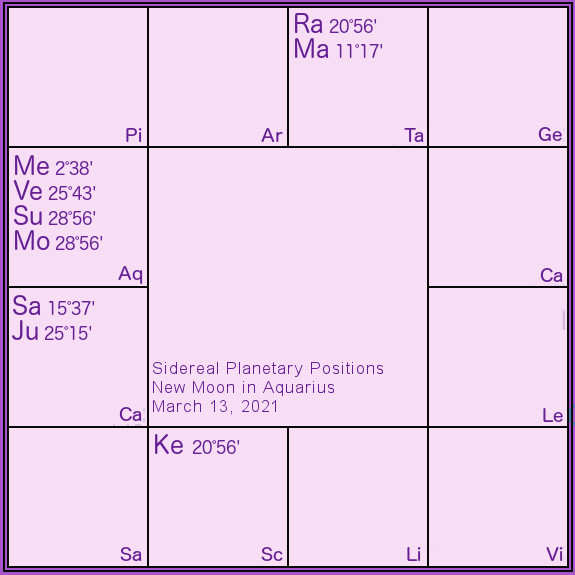
Kala Sarpa Yoga
This year’s Kala Sarpa yoga cycles continue, as Rahu and Ketu appear to cut the sky in half with all planets to one side of the nodal axis. Kala Sarpa can be translated as “black snake” or the “serpent of time,” and intensifies subtle forces on all levels, including inner challenges as well as strengths and yogic combinations in a chart. Mars joins Rahu in Taurus, and tho he will transit out of Taurus and into Gemini in one month, technically breaking the cycle, the intensity brought on by the alignment can sometimes continue when only one planet has crossed to the other side of the sky.
Purva Bhadrapada
The former “lucky-footed one” is the Vedic nakshatra (star-sign) where Sun and Moon begin this lunar cycle. This nakshatra bridges Aquarius and Pisces and is often represented by a funeral cot, symbolizing the transition from life into death, or ultimate liberation. It is ruled by Aja Epakada, the one-footed goat who is often associated with the image of Lord Shiva as Nataraj dancing on one foot, a fitting image for Maha Shivaratri.
Om Namah Shivaya!
Personal Chart Readings with Coaching Are Available Here










